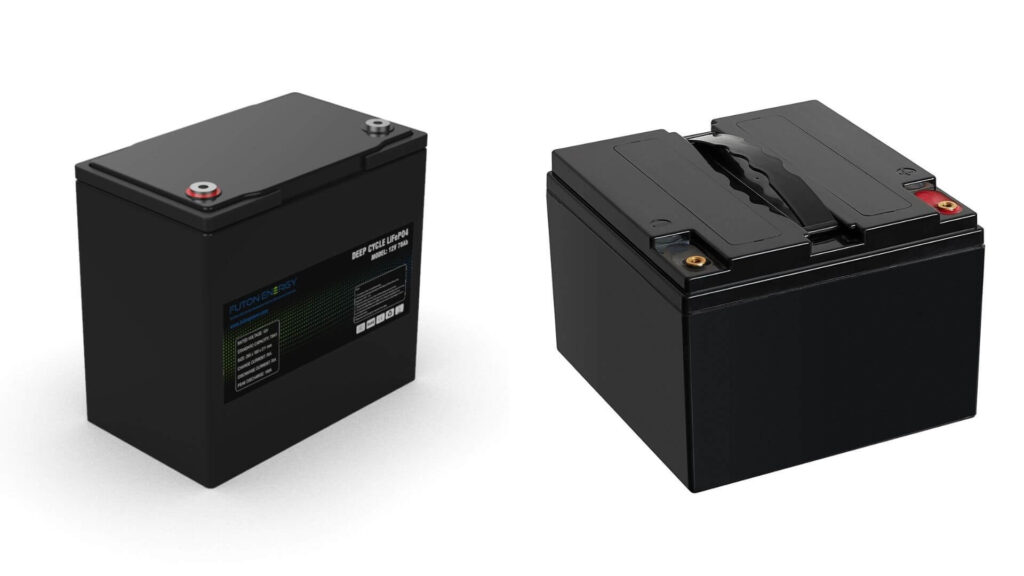LiFePO4 and lead acid are two of the most popular types of batteries on the market. Both have pros and cons, so it can be tough to decide which one is right for you.
Here’s a rundown of the differences between these two battery types so you can make an informed decision.
Charging speed
Lithium iron phosphate batteries can be charged much faster than lead-acid batteries. This is because they have a higher energy density, meaning they can store more energy in a smaller space.
This makes LiFePO4 batteries perfect for applications where charging time is critical, such as in electric vehicles and portable electronics.
Price
Lithium iron phosphate (LiFePO4) batteries have many advantages over lead-acid batteries, but they also have a higher price tag.
A deep cycle LiFePO4 battery typically costs 3-10 times as much as a similarly sized deep cycle lead-acid battery.
Performance in cold weather
A lithium iron phosphate battery won’t accept charge at low temperatures. This is because the battery’s internal resistance will increase as the temperature decreases, which will eventually cause the battery to stop accepting a charge. Anyway, there is a heating film solution now which enables to charge the battery in cold weather.
Lead acid batteries are tolerant of low temperatures and will accept charge at low temperatures as long as the charge is low.
Memory effect
Lithium-ion batteries don’t suffer from the “memory effect” that lead-acid batteries do. This means that you can recharge them even if they aren’t completely drained, and they won’t lose their capacity as a result.
Energy density
Lithium iron phosphate batteries have a higher energy density (325 Wh/L) hence are smaller and lighter than lead-acid batteries (80–90 Wh/L). This makes them ideal for portable devices such as cell phones, laptops, and tablets.
Depth of discharge
Lithium iron phosphate batteries have a higher depth of discharge than lead-acid batteries. This means that they can be discharged to a lower state of charge before needing to be recharged.
Consequently, LiFePO4 batteries are ideal for applications where the battery will be regularly cycled between a high state of charge and a low state of charge.
Cycle life
LiFePO4 batteries have a much longer cycle life than traditional lead-acid batteries. While lead-acid batteries typically last for around 500 to 1500 charge cycles, LiFePO4 batteries can last for up to 5,000 charge cycles (10 years).
LiFePO4 batteries are an excellent choice for applications where reliability and long service life are important.
Do you need a lithium iron phosphate or lead acid battery?
There are pros and cons to both lithium iron phosphate and lead acid batteries. The choice ultimately depends on your specific needs.
Lithium iron phosphate batteries are a great choice for people who need a battery that can handle a lot of repeated cycling.
Lead acid batteries are a cheaper option, and they are better for people who need a battery that will provide a lot of power quickly.
Can LiFePo4 and lead acid batteries be used interchangeably?
The simple answer is yes. LiFePO4 batteries can be used interchangeably with lead acid batteries.
Lead acid batteries have been the mainstay of the battery industry for many years. However, with the advent of LiFePO4 technology, lead acid battery equipment can now take advantage of the high discharge platform and long cycle life of LiFePO4 batteries.
Since many lead acid battery-powered equipment is compatible with lead acid batteries, this is a good solution.
Wrapping Up
Lithium-ion battery technology is superior to lead-acid due to its reliability and efficiency. The possible applications for lithium iron phosphate batteries are limitless. Primarily, these batteries have found their perfect spot in consumer electronics.
Lead-acid batteries, on the other hand, are relatively cheap, making them a cost-effective option for systems that aren’t used regularly. Lead storage batteries can be used for small-scale power storage as well as large grid-scale systems.

